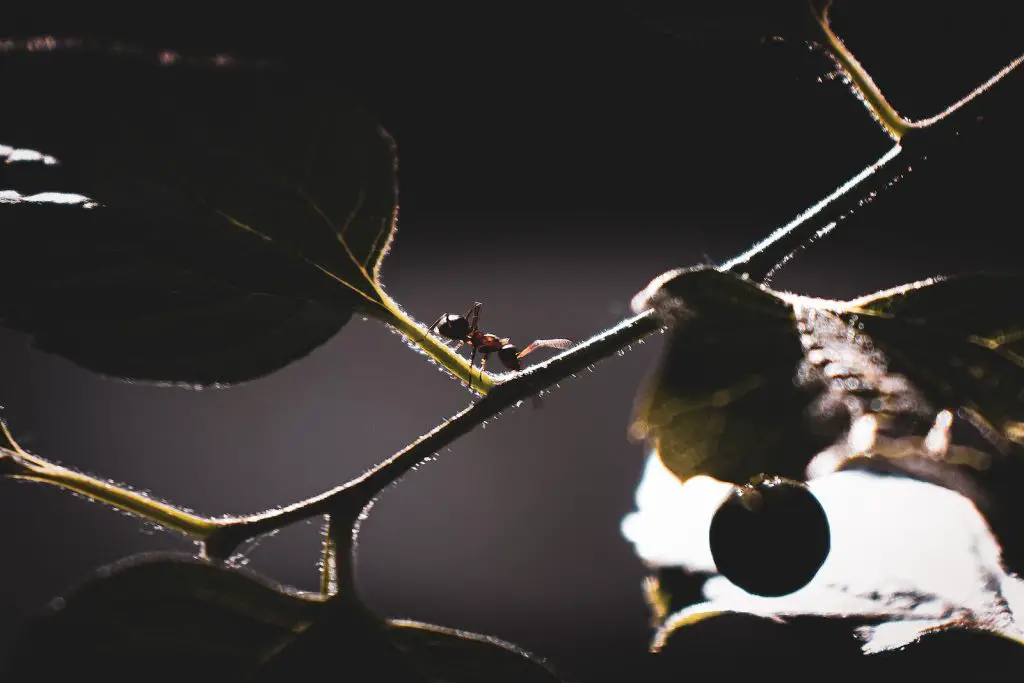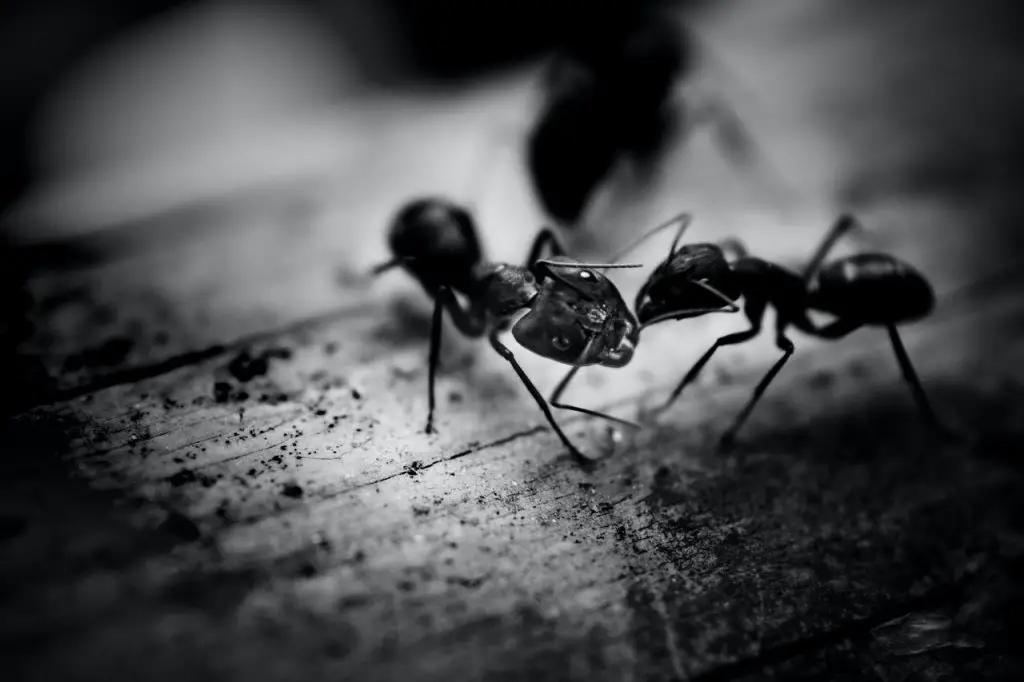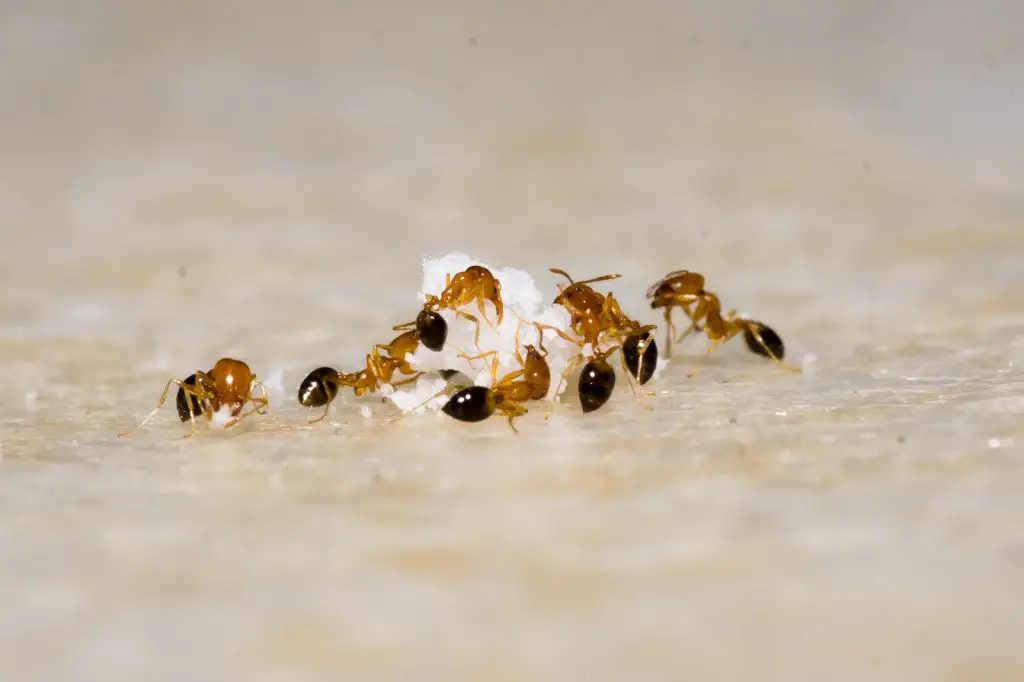Have you ever wondered how ants navigate in the dark without stumbling or losing their way? While it may seem like a daunting task.
These tiny creatures have evolved some incredible adaptations to help them thrive in low-light conditions.
While ants may not have the best vision in the dark, they have developed specialized adaptations that allow them to navigate and function effectively in low-light environments.
Join me as we explore the fascinating world of nocturnal ants and uncover the secrets of their impressive sensory systems.
How do ants see in the dark? Discovering the unseen
Ants possess the ability to see in low-light conditions, which is why they often prefer to forage in the dark. They tend to avoid areas with human activity and other predators, which are usually well-lit and exposed to sunlight.
Ants see the world in the dark but in a way that is vastly different from humans.
Their compound eyes, which are made up of thousands of individual visual units called ommatidia, provide them with a panoramic view of their surroundings.
This allows them to detect movement, polarized light, and colors that we can’t even perceive.
The ommatidia in an ant’s compound eyes work together to form a mosaic image that provides them with information about the size, shape, and distance of objects.
Nocturnal Ants and Their Remarkable Vision
Nocturnal ants are a fascinating group of ants that have adapted to function primarily in low-light and dark conditions.
These ants have evolved unique features that allow them to navigate and communicate in the dark with ease.
One of the most important adaptations of nocturnal ants is their enhanced night vision. Their compound eyes contain larger lenses and more sensitive photoreceptor cells, allowing them to gather more light in low-light conditions.
Nocturnal ants also have specialized retinas that allow them to detect polarized light, which they use for navigation and orientation.
To complement their enhanced night vision, nocturnal ants have also developed a highly sensitive sense of touch.
They use their antennae and specialized hairs on their legs to detect vibrations and air movements, which they use to navigate and communicate with each other in the dark.
Exploring the Limitations of Ants’ Vision in Low-Light Conditions
Ants’ vision in low-light conditions is remarkable, but it does have its limitations.
The small size of their compound eyes means that they have a limited ability to gather light, and therefore have poorer visual acuity in the dark.
Additionally, the mosaic-like images formed by their ommatidia can be distorted in low light, making it difficult for ants to accurately perceive shapes and distances.

To overcome these limitations, ants rely heavily on their sense of touch and chemical cues to navigate and communicate with each other in the dark.
They also use other sensory organs, such as their antennae, to detect vibrations and air movements.
Navigating the Night: Fascinating Adaptations of Ants for Life in the Dark
Ants have evolved several adaptations that help them navigate in the dark. One of the most important adaptations is their ability to use their antennae to detect chemical cues, which they use to communicate with each other and locate food sources.
In addition, ants have specialized hairs on their legs that allow them to detect vibrations and air currents, which they use to navigate and communicate in the dark.
They also have a keen sense of touch, which they use to explore their environment and locate obstacles.
To enhance their ability to navigate in the dark, ants have also developed a remarkable memory system.
They are able to create mental maps of their surroundings and use these maps to find their way back to their nests.
Another important adaptation is their ability to adjust their speed and direction of movement based on the amount of available light.
Ants are able to move more slowly and carefully in the dark, allowing them to avoid obstacles and find their way more easily.
Foraging and Communication in the Dark: The Mysterious World of Ants After Dark
Foraging and communication in the dark are crucial aspects of ants’ survival.
One of the key ways ants communicate in the dark is through the use of pheromones. Ants release pheromones. Which are chemical signals, to mark trails and communicate with other ants about food sources and potential threats.
To find food in the dark, ants use their sense of smell to detect chemical cues, which they follow to the source of the food.
They also use their sense of touch to explore their surroundings and locate food sources.
Once an ant has found food, it will return to the colony and communicate the location of the food source through the use of pheromones. Other ants in the colony will then follow the pheromone trail to the food source.
To enhance their ability to communicate and forage in the dark, ants have also developed specialized behaviors. For example, some ants will travel in groups, with each ant following the ant in front of it, creating a chain that helps them to navigate in the dark.
Can Ants See Humans? Peeking Through Ant Eyes
Ants have limited eyesight and can’t see humans clearly.
However, if a human gets too close or disturbs their nest, ants sense the vibrations or movement and become agitated.
Despite their limited vision, ants have evolved to be highly efficient at detecting potential threats and avoiding danger.
They can detect changes in light and movement, allowing them to perceive potential threats even in low-light conditions. Additionally, their social behavior and use of pheromones allow them to quickly communicate and coordinate with other members of their colony to defend against predators.
Also read: can ants smell humans?
Can Ants See Bacteria? Beyond the Naked Eye
Ants cannot see bacteria with their naked eye, but they have a highly developed sense of smell and can detect the presence of bacteria through chemical cues.
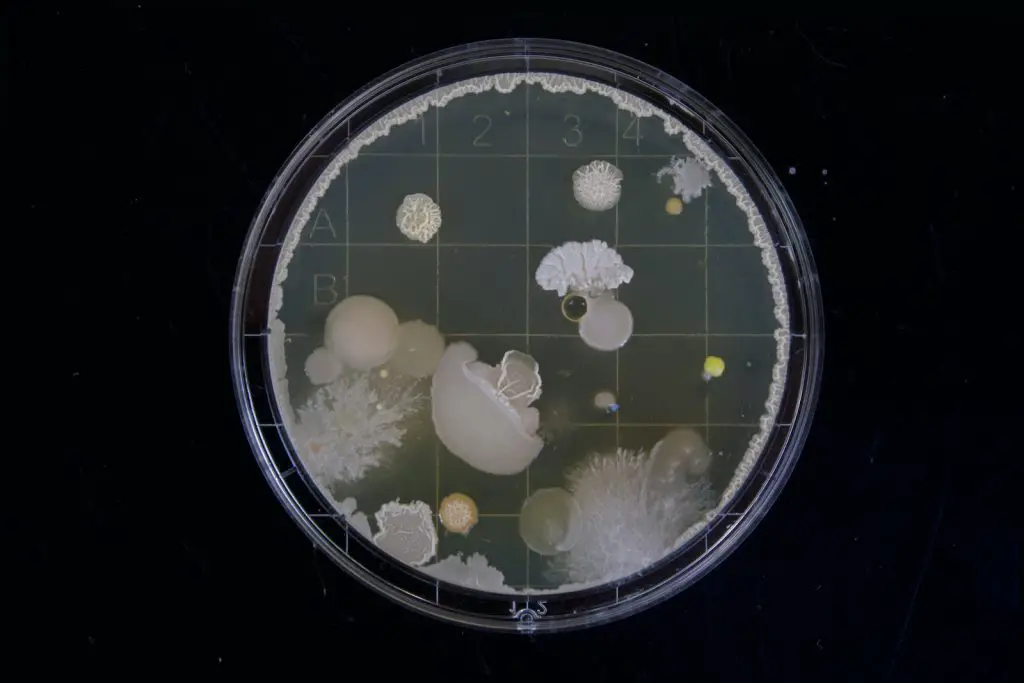
Because bacteria are too small to be seen with the naked eye. Bacteria are microscopic organisms that range in size from 0.2 to 2 micrometers, which is much smaller than the size of an ant’s eye.
Are Ants Attracted to Light? Light up the Truth
Most ants are nocturnal, they prefer darkness.
Some species of ants are attracted to artificial light sources at night, particularly if they are foraging for food or if the light source is near their nest.
In general, ants are more attracted to food and other sources of sustenance than to light.
Can Ants See Color? Discovering the Color Perception of These Tiny Insects
Ants can see color. Most ants have compound eyes that are capable of detecting different wavelengths of light, including colors.
As far as current research suggests, ants are trichromatic, meaning they have three types of color receptors in their eyes and can see a range of colors including ultraviolet, blue, green, and red.
There is no evidence to suggest that ants cannot see any particular color.
However, the range of colors that ants can see differs from what humans can see, as their eyes have a different structure and sensitivity to light.
Conclusion
The blog Can ants see in the Dark? explores the adaptations that allow ants to thrive in low-light conditions.
Ants can see in the dark but in a vastly different way from humans.
Their compound eyes provide them with a panoramic view of their surroundings, and they can detect movement, polarized light, and colors that are not perceptible to humans.
Nocturnal ants have evolved unique features that allow them to navigate and communicate in the dark with ease, such as their enhanced night vision, sensitive sense of touch, and ability to detect polarized light.
Although their vision has limitations, they can rely heavily on their sense of touch, chemical cues, and antennae to navigate and communicate with each other.
Foraging and communication in the dark are crucial aspects of ants’ survival, and they use specialized behaviors, such as traveling in groups, to enhance their ability to navigate in the dark.
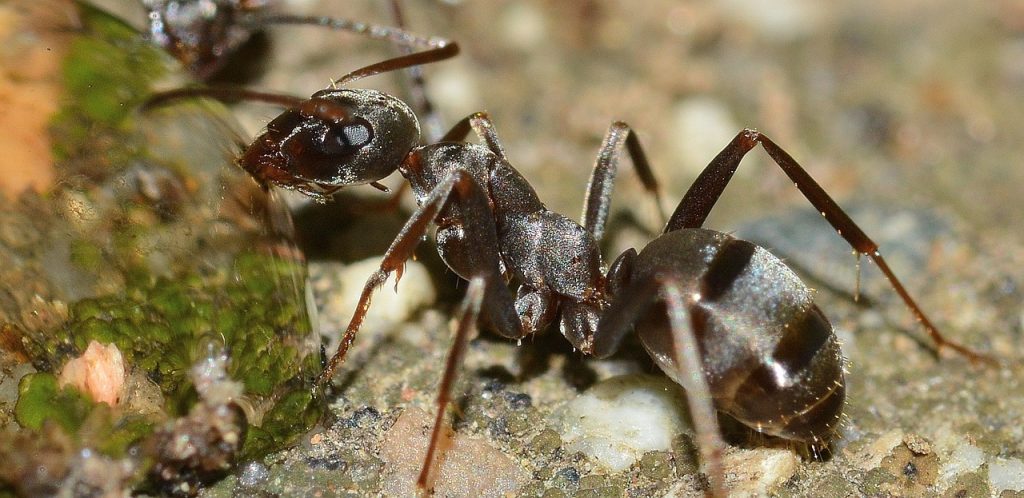
Ants have limited eyesight and cannot see humans or bacteria with their naked eyes, but they have a highly developed sense of smell and can detect the presence of bacteria through chemical cues.

